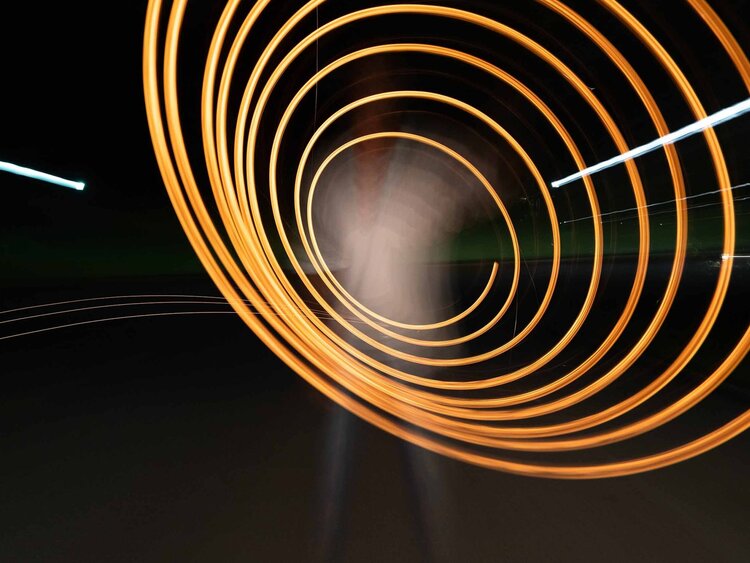
Photograph: Mathias R Reding/Unsplash
We are heading towards a precipice. Our ‘take, make, waste’ economy is driving the climate, ecological and health crises we’re facing everywhere.
What can we do? We must radically rethink business-as-usual: to be regenerative instead of destructive and wasteful. The better our lifestyles, the bigger our footprint grows: resource extraction, ecosystem degradation, waste, and emissions.
Over the last 50 years, global resource use has tripled, growing 70% faster than the population. Extraction and processing of materials, fuels and food cause over half of greenhouse gas emissions and 90% of water stress and biodiversity loss. We’ve incited climate chaos, depleted oceans, water scarcity and degraded land. Humanity is causing the widespread extinction of other species.
We are guilty of wilful blindness. We buy more and better things to fuel our higher standards of living, yet this degrades humanity’s wealth (our global commons), undermining the wellbeing of future generations.
In short, we’ve designed systems with voracious appetites that are destroying value and even threatening our ability to thrive – and survive.
How did we get to this cliff edge? With our relentless drive for business growth: more sales, faster ‘fashions’, single-use and disposability, underpinned by the myth of consumerism: that more ‘stuff’ makes us happy.
Most businesses depend on increasing consumption, enabled by sophisticated marketing strategies. Behavioural psychology and other techniques ‘hook’ customers into buying more and replacing things quickly. Happiness chemicals, including dopamine (the reward molecule) and oxytocin (the ‘love’ hormone), can drive sales and addictive behaviour.
We are guilty of wilful blindness. We buy more and better things to fuel our higher standards of living, yet this degrades humanity’s wealth (our global commons), undermining the wellbeing of future generations. Now, though, leading thinkers, NGOs, politicians and even major consultancies are highlighting the conflict between business success and social prosperity.
So how do we rethink these systems to live within the limits of our planet? How can companies find ways to supply those desirable, functional objects, to meet aspirations for higher living standards without increasing the carbon, ecological and resource footprint? What behavioural shifts can marketers encourage?
Circular approaches hold the key to the puzzle. Circular systems change the dynamic, breaking the link between consumption and well-being – seeing success through a different lens.
Each successive industrial revolution has used breakthroughs in power generation, communications and transport to spark innovation, build new industries – and expand our footprint. The next industrial revolution will be different, based on ‘caretaker’ mindsets and systems thinking, to conserve and regenerate precious resources and ecosystems. It will be a circular revolution.
Circular approaches hold the key to the puzzle. Circular systems change the dynamic, breaking the link between consumption and well-being, seeing success through a different lens.
You’ve probably come across different definitions of the circular economy, with most schools of thought using these four principles:
Design to keep products and materials in use.
Eliminate waste and pollution.
Recover and regenerate resources and living systems.
Use safe, sustainable materials.
Businesses are leaning towards increasing recycled content, improving recyclability, and developing ‘new generation’ materials. But these advances don’t tackle the main issue: our vast consumption.
Products with a life of their own
We need a breakthrough: products with a ‘life of their own’, not just serving a single user[i]. Objects should be designed for reuse and resale once someone no longer needs them, or they should be available in multi-user systems with customers sharing or renting when needed.
Let’s unpack this to understand how it helps separate the benefits of products and services from their cost to global commons.
Firstly, we can design things to be durable and robust, easy to care for, repair and upgrade. Circular designs allow products to be efficiently remade (remanufactured), involving rigorous testing and replacement of worn components. Remanufacturing means cheaper, high-quality, high-performance products backed by a solid warranty.
Might these circular products be less affordable? No. Extra costs are more than offset by a reduced cost-of-ownership. Over a longer lifetime, purchase cost plus maintenance minus resale value is lower for each customer in the ownership chain – the result is better value. Patagonia, Fairphone and Vitsoe all embed these approaches into their business models.
What about business impact? Selling fewer new, high-quality products supports healthy profit margins. In the long term, some overheads are lower, with fewer new product launches and less marketing to find new customers or encourage people to replace existing products. Plus, there are revenue opportunities from selling servicing, spare parts and upgrades, and from supplying resale, subscription and pay-per-use services.
By designing circular products to have a life of their own, we can decouple industry’s footprint from the value delivered to society.
Secondly, we can design objects to be used more intensively: rented, shared or exchanged with other users, so we get more ‘use’ from the product and its embedded resources. Algramo and Loop offer reusable packaging that’s more convenient and better value, so brands like Unilever and Nestlé can engage directly with consumers. Homie provides pay-per-use home appliances, rewarding customers for using lower impact wash cycles, and Grover rents the latest technology products with affordable and flexible options.
Finally, we recover value instead of wasting it. Once the product finally reaches the end of its life, circular systems recover the product and regenerate the materials we need for the next generation of products.
Radical and disruptive
By designing circular products to have a life of their own, we can decouple the industry’s footprint from the value delivered to society. We reduce resource and environmental costs by extending lifetimes to slow the replacement cycle or by supplying the same level of service through fewer products to boost productivity.
This is radical. It’s not resource efficiency or a few tweaks to product design. It will be as disruptive as digital, changing every aspect of business, from finance, sales, marketing and operations to your entire supply chain.
By bending the curve on accelerating waste, emissions and resource use, we can start to regenerate depleted soils, forests, rivers and oceans. The circular economy is a critical tool to create future-fit, prosperous businesses that contribute to societies and create value for future generations.
We’re already in the decisive decade. It’s time to rethink your strategy for a circular revolution!



